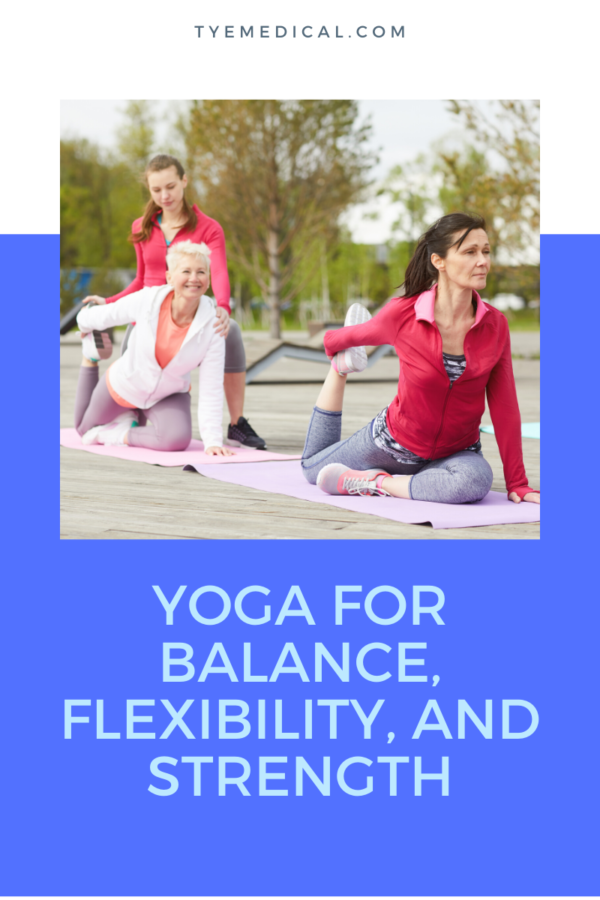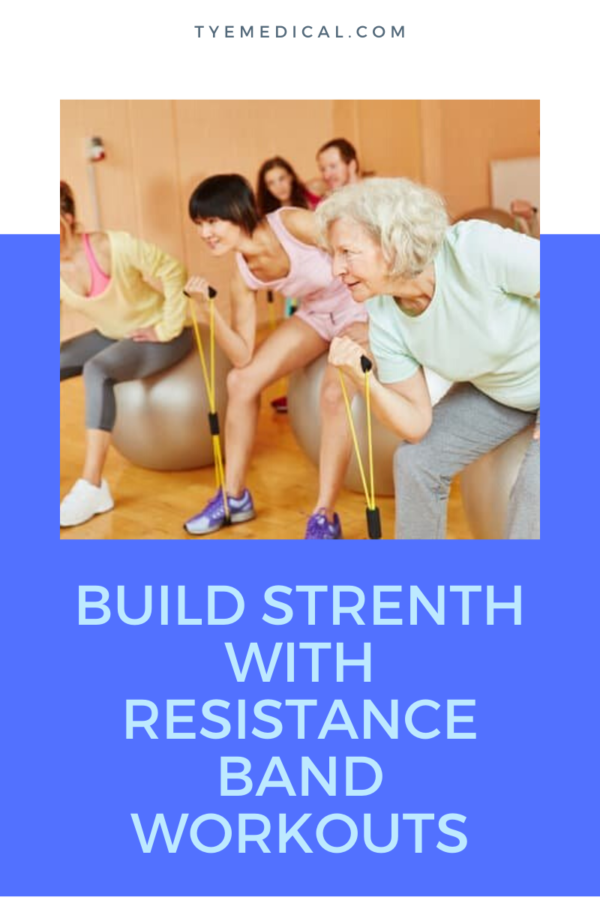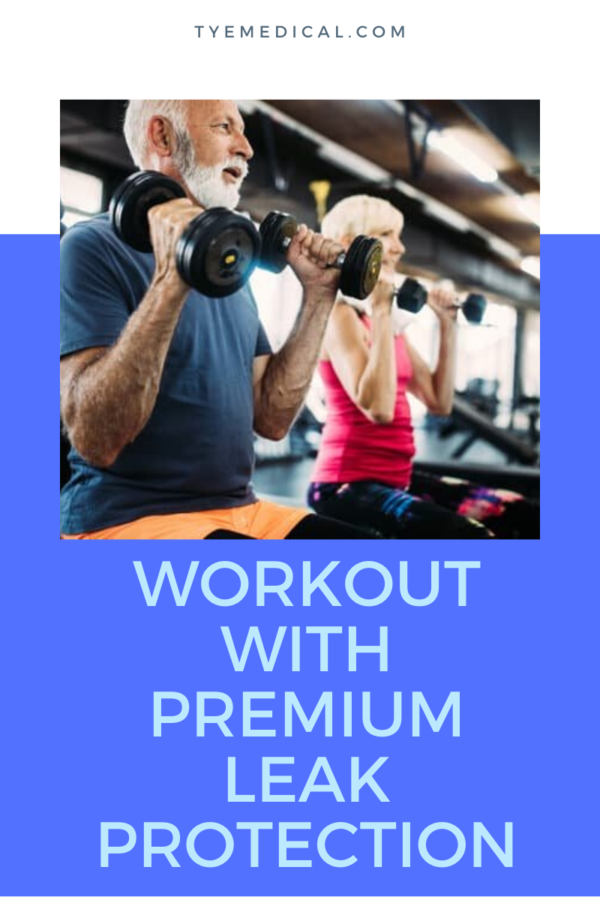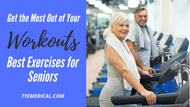Exercise for Seniors: Best Workouts for Older Adults
Aug 31st 2020
Maybe you’ve just come around to the idea of incorporating intentional exercise into your day. Or, maybe you feel that your usual workout routine is doing more harm than good. Either way, you know exercise for seniors is a big deal, because it prevents your from becoming sedentary. Movement is key when it comes to your health and slowing the aging process. If you want to get on the right track with workouts for older adults, then read on to learn more about how exercise benefits you as you age, and what types of exercise will impact you the most.
Increases Bone and Muscle Strength with Exercise for Seniors
As we age, our bones lose calcium and other minerals making them less dense and fragile. As if that weren’t troubling enough, we’re also losing muscle mass, which is known as sarcopenia. This occurs when your body resists the normal signals for muscle growth, which is common during the aging process. If you couple this with a sedentary lifestyle, the muscle loss adds up.
Not only does this loss of bone and muscle negatively affect your strength, it also makes you more vulnerable to injury. It’s much easier to sprain a muscle, break a bone, or lose your balance without proper support from your bones and muscles.
But there is good news! You can increase both bone density and muscle mass through the right types of exercise for seniors. Any workout that makes you use your muscles also strengthens those muscles. Additionally, any weight-bearing exercise that requires you to support your weight, also strengthens bones.
Aerobic Exercise Can Improve Memory and Cognitive Skills
Researchers have found that aerobic and cardio exercises also help your brain. That means that when your heart is pumping, you’re also boosting memory and thinking skills. It promotes the growth of new blood vessels in your brain and stimulates production of new brain cells. (Now that’s amazing!) Also, many studies suggest that these thinking and memory centers in the brain grow larger in people who exercise regularly. For more details about how exercise impacts your cognitive function, check out Harvard Health Publishing’s article on the topic.
Exercise for Seniors Boosts Heart Health
Inactivity weakens the heart muscle and allows plaque to buildup inside your arteries. Since seniors are already prone to heart disease and other cardiovascular diseases, engaging in activities that elevate your heart rate goes a long way toward preventing or delaying the onset of these illnesses.
The best heart healthy exercises involve cardio workouts that keep your heart pumping and blood flowing consistently – even if at varying rates.
You can read more about heart disease in our article How to Prevent Heart Disease: What Everyone Needs to Know.
So the question remains: what kind of exercises should you be doing to maintain good health without causing pain or injury?
1. Swimming
If you enjoy the water, swimming and water aerobics can help you boost your cardiovascular fitness while also strengthening your muscles. It’s a great choice if you suffer from arthritis or osteoporosis, because there is minimal stress on your bones and joints. Consider taking a water aerobics class, or if you’re a confident swimmer, get a gym membership with pool access.
 2. Yoga
2. Yoga
Modern American yoga is mostly about physical fitness, flexibility, balance, and leaving stress behind. This makes it a nearly perfect exercise for seniors. While your heart will elevate to some degree, this type of workout increases muscle tone, improves flexibility, and boosts balance. Additionally, yoga helps prevent injury by boosting balance and flexibility. But that’s not all. The weight-bearing poses also strengthen bones and muscles.
You’ll find many types of yoga for beginners available on downloadable apps. If you’re new to exercise or completely new to yoga, it might benefit you to try a yoga class first, if possible. Try chair yoga, restorative yoga, or hatha yoga depending on your level of fitness and mobility.
3. Walking
When it comes to extending your life, walking may be the best thing you can do. It doesn’t have to be long either. Just 30 minutes each day can have profound effects on body weight, cardiovascular health, muscle mass, cognitive health, and bone health. When it comes to exercise for seniors, walking is something most of us can do. You can start small and work your way up to 30 minutes per session. It’s also important to get the pace right. When you begin, walk at a comfortable pace. If you tolerate this well, at some point you can work on increases your pace and heart rate.
However, if you have pain in your knees due to arthritis or injury, outdoor walking and most indoor tracks might aggravate your condition. Instead, try swimming, water aerobics, or moderate cycling. Some yoga might be okay for you. It’s best to find your tolerance and consult your doctor.
4. Pilates
Pilates, like yoga, is also a low-impact workout that includes strength building while increasing flexibility and balance. They both target the core (or the muscles in your abdomen). So what’s the difference? With Pilates, you’ll spend more time on the floor rather than in balanced standing poses. Additionally, the workouts tend to have a faster pace and are more focused on building core strength, which is immensely important for improving balance.
Pilates classes for beginners are typically easy to find, which makes it a convenient option.
5. Strength Training
When it come to exercise for seniors, strength training is key. Whether you get a Curves membership or try some bodyweight workouts at home, it’s important to maintain or build muscle mass. Yoga and Pilates do increase strength, but that’s not their primary benefit.
Strength training includes the use of equipment like the Curves Circuit, weightlifting (done very carefully), and bodyweight workouts. You can join some local classes to get started, which is a great way to learn technique and how to prevent injury.
If you’re ready for at-home strength building, bodyweight workouts are a great option. Some apps, like Fitbit Coach (no fitness tracker required) allow you to start at your own pace and increase intensity. This app also provides a lot of instruction and has a free version.
When strength training, it might be best to avoid crunches and the leg press, because these tend to strain the lower back and could cause injury. We’re more prone to muscle pain and pinched nerves as we age, so it’s best to avoid certain moves. Also, be careful about your knees when performing bodyweight exercises. If you have knee pain, you may need to modify some of the moves. Fitbit coach offers good instruction on how to care for your knees during the workouts.
 6. Resistance Band Workouts
6. Resistance Band Workouts
This is technically a type of strength training, but it’s in a class by itself. Resistance band workouts are becoming a popular type of exercise for seniors, because it’s easily done at home and customized for each person’s fitness level.
These types of workouts use exercise bands that help you achieve some resistance during your workout. When you pull back on the bands with various parts of your body, you encounter resistance and must engage your muscles further to overcome the tension. For many seniors, it’s a great alternative to lifting weights and safely builds muscle and bone strength.
Silver Sneakers published a great guide with a video for beginners that’s worth checking out. You might also want to read, The Total-Body Resistance Band Workout.
7. Cycling
Whether indoors or outdoors, cycling keeps your heart healthy and builds lower body strength. If you’re concerned about falls or bad weather, then a stationary bike at home or spin classes at the gym are great options for staying fit. Cycling is also easy on the joints since it’s a very low-impact workout. Arthritis sufferers who aren’t interested in swimming or water aerobics can get their cardio in with cycling. It’s best to keep the pace moderate and not push yourself too hard. Conventional wisdom says to increase intensity until it’s difficult to talk but not impossible.
Just keep in mind that you’ll want to do something to help with upper body strength – like doing pushups or using free weights.
8. Cardio Classes for Seniors
If you’re ready to do more than walking to get your hear rate up but aren’t interested in cycling or swimming, then consider taking classes at your local YMCA. Aerobic or cardio exercise for seniors helps maintain overall health, and when you join a class you get the added benefit of meeting new people and even forming new friendships.
You’re probably wondering what kinds of classes are available. Here is a sampling of YMCA cardio classes specifically designed for senior adults:
- Cardio Strength
- Circuit Training
- Zumba
- Chair Aerobics
- Chair Fitness
Again, this is just a sampling and available classes will depend up your location. Of course, if you’re of a certain age and have good health, you can check out some other classes for a greater challenge.
Additionally, your local YMCA will also have yoga, Pilates, strength training, and other non-cardio workout classes available.
Creating Your Senior Workout Plan
Before we go, we wanted to give you some guidelines to help you plan your routine. These recommendations are specifically for seniors and come from the CDC (Center for Disease Control):
Cardio
- 5 Days per Week
- 3 days of walking for 30 minutes (can be divided into 15-minute segments)
- 2 days more intense cardio for 30 minutes (cycling, swimming, aerobics class, Zumba, etc.)
- 2 days of rest, not consecutive
Strength Training
- 3 days per week
- Not consecutive
Balance & Flexibility
- 7 days per week (Yoga or Pilates)
 Exercise for Seniors with Incontinence
Exercise for Seniors with Incontinence
If you experience incontinence, whether routine or during workouts (known as stress incontinence), read our article, Exercising with Stress Incontinence: How to Beat the Leaks! for more detailed information. Meanwhile, it’s best to keep your workouts extremely low impact to minimize leakage. For cardio, stick to walking, swimming, or the elliptical machine. When it comes to strength training, you are mostly in the clear, but some bodyweight workouts like lunges, crunches, and squats, cause pressure in the pelvic area that can lead to leaks. So be aware of this and avoid those movements or substitute more bladder friendly ones.
Try Our Premium Products and Optimize Your Leak Protection
You shouldn’t have to live in fear of embarrassing leaks. So before you head to the gym or open that at-home workout app, be sure to order the right incontinence product for your needs. People of all ages can experience stress incontinence for various reasons, which is why our products are available in a wide range of absorbency levels and styles.
For light incontinence, our Ultra-Thin Pads are available with absorbency levels of Very Light to Ultimate and include odor control technology as well as leak barriers.
For heavier leaks try our Protective Underwear that comes in three absorbency levels with the option of inserting one of our Shaped Pads. As one of our top products, it includes Leakage Barrier Leg Cuffs and a Super Absorbent Gel Core. You get many premium features along with barely detectable protection against urine leaks.
Shop now for light incontinence products or Protective Underwear.

